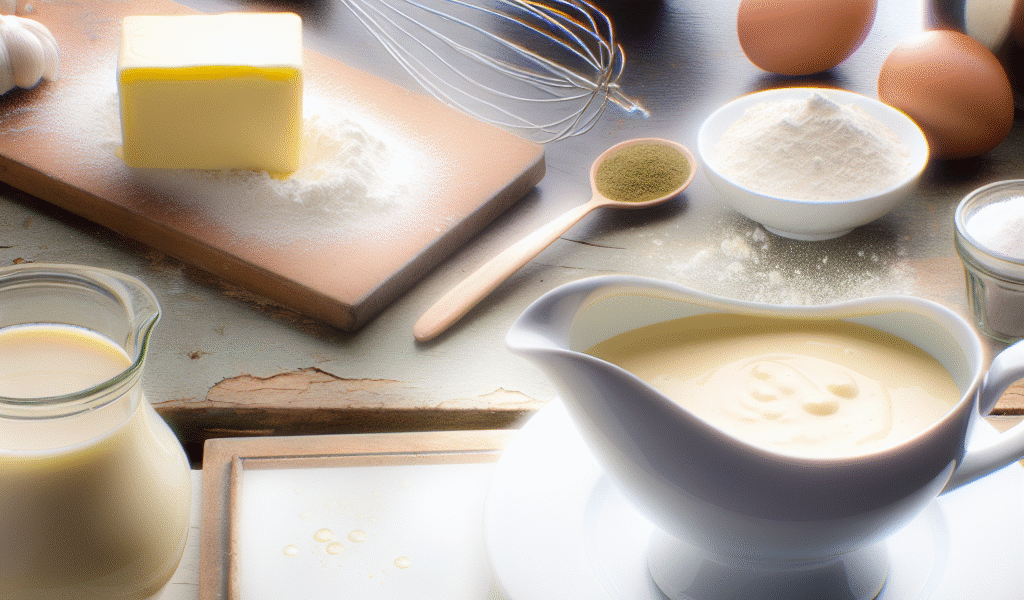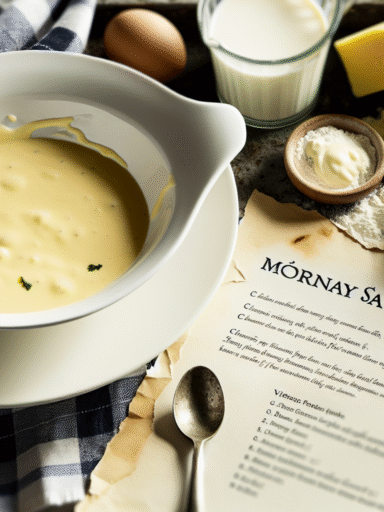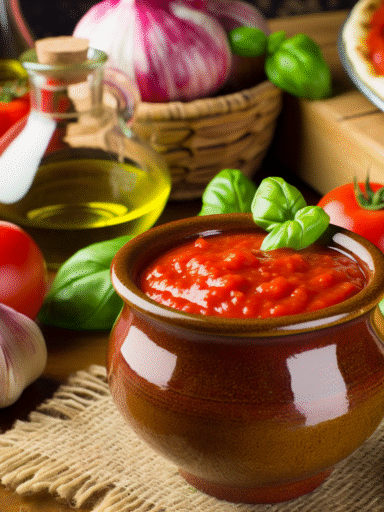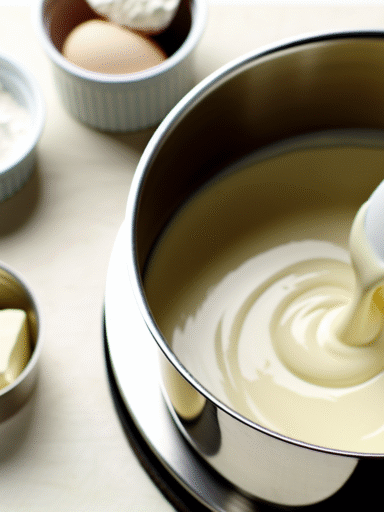Béchamel
Tags / Categories: creamy, mild, nutty flavor profile, milk, butter, flour, French cuisine, classic sauces, versatile base sauce, comfort food
Prep Time: 5 minutes
Cook Time: 10 minutes
Total Time: 15 minutes
Difficulty Level: Easy
Yield: About 2 cups (enough for 4 servings)
Introduction
Béchamel sauce is one of those kitchen staples every cook should have in their repertoire. This creamy, velvety white sauce acts as the perfect blank canvas to elevate dishes from pasta to veggies to baked casseroles. Often called the mother of sauces, béchamel’s gentle flavor and luscious texture make it a timeless classic in many cuisines. Let’s dive into how to make this beautifully simple sauce and discover its endless possibilities.
Ingredients List
- 2 cups whole milk (warmed)
- 4 tablespoons unsalted butter
- 4 tablespoons all-purpose flour
- Salt, to taste
- Freshly ground white or black pepper, to taste
- Pinch of freshly grated nutmeg (optional but highly recommended)
How to Make Béchamel: Step-by-Step Instructions
- Melt the butter: In a medium saucepan over medium heat, melt the butter gently. You’re looking for it to foam but not brown—your kitchen will smell amazing right about now.
- Make the roux: Sprinkle the flour evenly over the melted butter. Stir with a wooden spoon or whisk continuously for about 1-2 minutes. This cooks out the raw flour taste and helps develop a subtle nuttiness. Don’t stress if the mixture looks a bit thick or pasty—that’s exactly what you want.
- Slowly add the milk: Remove the pan from heat briefly. Pour in about a quarter of the warm milk while whisking vigorously to keep lumps from forming. Once smooth, return to medium heat and gradually add the remaining milk, whisking constantly. This slow addition helps the sauce stay silky.
- Simmer and thicken: Bring the sauce to a gentle simmer, keeping the whisk moving as it thickens. This usually takes 5 to 7 minutes. You’ll start seeing that perfect creamy consistency—the sauce should coat the back of a spoon.
- Season and finish: Add a pinch of salt, freshly ground pepper, and a tiny grating of nutmeg. Give it a final stir and taste—adjust seasoning if needed. Voilà, your béchamel is ready to shine!
Serving Suggestions and Uses
Béchamel is incredibly versatile. Pour it over steamed vegetables for a silky finish, layer it in classic lasagna between sheets of pasta, or use it as a base for creamy gratins. Want to dress up a simple mac and cheese? Mix béchamel with sharp cheddar for rich, gooey goodness. It also makes a beautiful addition to soufflés or delicate chicken and fish dishes.
Origin & History
The story of béchamel traces back to 17th-century France, named in honor of Louis de Béchameil, a steward to King Louis XIV. While it’s often credited to the French kitchen, early versions of white sauces existed in Italian and Spanish cooking beforehand. It’s one of the celebrated “mother sauces” codified by chef Auguste Escoffier, meaning it’s the base for many other delicious sauces, including Mornay and cheese sauce. This humble white sauce has stood the test of time, becoming a global kitchen hero.
Variations & Substitutions
- Dairy-free twist: Swap whole milk for unsweetened almond, oat, or soy milk. Use vegan butter or olive oil for the fat. The flavor will be slightly different but still lovely.
- Cheesy béchamel (Mornay): Stir in grated Gruyère, Parmesan, or aged cheddar right at the end for a rich, cheesy variation perfect for gratins or pasta.
- Herb-infused: Simmer the milk with bay leaves, cloves, or peppercorns before whisking it in, then strain to add subtle aromatic depth.
- Gluten-free version: Replace all-purpose flour with a gluten-free flour blend or cornstarch (use half the amount of cornstarch). Whisk thoroughly to avoid lumps.
Storage & Make-Ahead Tips
You can prepare béchamel in advance and keep it in the fridge for up to 3 days in an airtight container. It tends to thicken when chilled; simply whisk in a splash of warm milk while reheating gently on the stove to bring it back to a smooth, pourable consistency. Avoid microwaving straight from the fridge—it can curdle. For longer storage, béchamel freezes well for up to 1 month; thaw overnight in the fridge, then reheat slowly with stirring.
Nutritional Information (per ½ cup serving)
- Calories: ~130 kcal
- Fat: 7g (mostly from butter)
- Carbohydrates: 12g
- Protein: 4g
- Sodium: depends on added salt
Related Sauces / Try Next
FAQ
Q: What if my béchamel has lumps?
A: No worries! Just whisk vigorously while cooking, or strain it through a fine sieve. Also, adding the milk slowly and whisking continuously helps avoid lumps in the first place.
Q: Can I use skim milk instead of whole milk?
A: You can, but whole milk makes a richer, creamier sauce. If you use skim milk, your béchamel will be thinner and less velvety but still tasty.
Q: How thick should béchamel be?
A: It should be thick enough to coat a spoon and hold a line when you run your finger through it, yet still pourable. If it’s too thick, thin it with a little warm milk; too thin, cook a bit longer for more thickness.
Making béchamel is easier than you think, and once you master it, the possibilities are endless. So, fire up your stove and create that creamy magic that makes simple dishes unforgettable!



